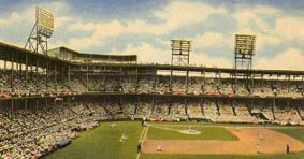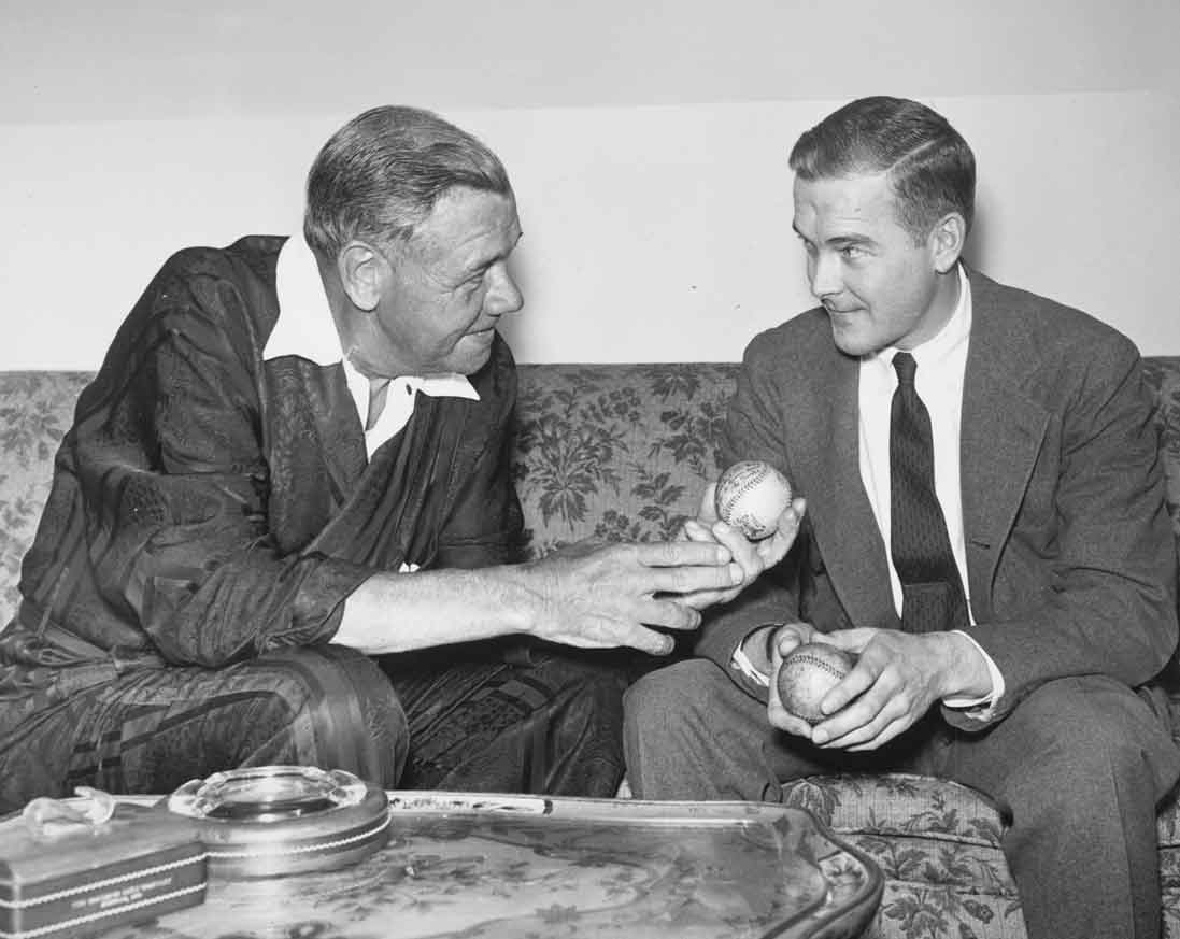Ruth and Johnny Sylvester
The next legendary Babe story occurs a number of years before the Called Shot in 1932. In this instance, it’s 1926. The Yankees are about to play against St. Louis in the World Series. A man named Sylvester gets in touch with the Yankees organization and makes an unusual request. He explains that his son, Johnny, is gravely ill with a brain injury due to a horse-riding accident. He hopes that the Yankees can do something for Johnny, a big Yankees fan, to bolster his spirits in the hospital. The Yankees respond, apparently sending autographed baseballs and several other items to Johnny.
Game 1 comes around. In New York, the Yanks win 6-3, with the rookie, Lou Gehrig, driving in the final run in his World Series debut. Babe does not hit a homerun in this game.
Next up is Game 2 in New York. It’s a tough game. Cardinals pitcher Grover Alexander pitches the entire game and New York loses 6-2. Again, Babe does not hit a homerun and even makes an error by missing a ball hit by Tommy Thevenow which turns into an inside-the-park homerun.
 On to Game 3 at Sportsman’s Park in St. Louis. While the Babe gets one hit, it isn’t a homerun. Cardinal’s pitcher Jesse Haines goes the distance and shuts out the Yankees by a score of 4-0.
On to Game 3 at Sportsman’s Park in St. Louis. While the Babe gets one hit, it isn’t a homerun. Cardinal’s pitcher Jesse Haines goes the distance and shuts out the Yankees by a score of 4-0.
By this point, Babe is aware of Johnny Sylvester’s illness and makes a promise that he’ll hit a homerun for Johnny in the next game of the World Series.
Up comes Game 4 in St. Louis the next day. It’s October 6, 1926 and over 38,000 fans are at the game. The Yanks are down 2 games to 1 and they’re looking for revenge. In this game, Babe smacks, not only one homer, but a total of three, contributing in a big way to the team’s 10-5 win to tie the Series. One report even has the ball traveling outside the park and smashing through a car dealership’s window.
 And, while the Yankees would eventually lose this Series to St. Louis, on this day, at this park, in this game, the legend of Babe and Johnny Sylvester was embedded into baseball lore. After the season was over, Babe reportedly visited Johnny in the hospital, with the press following the story. Johnny eventually recovered from his illness. Babe and Johnny did have some interaction in later days, when Babe was sick and aging.
And, while the Yankees would eventually lose this Series to St. Louis, on this day, at this park, in this game, the legend of Babe and Johnny Sylvester was embedded into baseball lore. After the season was over, Babe reportedly visited Johnny in the hospital, with the press following the story. Johnny eventually recovered from his illness. Babe and Johnny did have some interaction in later days, when Babe was sick and aging.
While the story already had that special Babe Ruth aura, the movie, “The Babe Ruth Story” in 1948, where Babe was played by the prolific actor William Bendix who had a physique that reflected Babe’s and a new York accent, only cemented this and some of the other legends, such as the Called Shot, further. Although the movie has generally been considered to be one of the worst baseball movies ever made, it still served to reinforce many of the stories and legends about the Babe.
Flash forward to the 1980’s. It’s 1986 and the 40th Anniversary of the Johnny Sylvester story. The Babe Ruth Museum begins to receive many press inquiries to validate the story, so they begin to investigate. Well, the Museum eventually tracks down the real Johnny Sylvester, finding him as a retired banker living in Connecticut. When asked for some proof that these events actually happened, Mr. Sylvester showed Museum officials a baseball that he had. The ball had Babe’s handwriting and signature on it. The ball said, “I’ll knock a homer for you in Wednesday’s game. Babe Ruth.” That ball is now on display at the Babe Ruth Museum in Baltimore.
BRC notes that there have been many versions of this story that has Babe located in any number of places. For example, a number of writings cite that Babe visited the hospital to make his promise personally to Johnny the day before Game 4. However, that is highly unlikely, since Games 3 & 4 of the 1926 World Series were played at Sportsman’s Park in St. Louis on October 5th and 6th, respectively. It would have been virtually impossible, in those days, for Babe to be in both New York and St. Louis in the course of that two-day span.
So, whatever the actual sequence may be, there is authenticated evidence of the interaction between Babe and Johnny that October of 1926. And, really, it may not matter in the end. Legends are often a mix of truth and lore. What is typically important about these stories is that they reflect upon their events and the character of the people in them.
Follow Us: